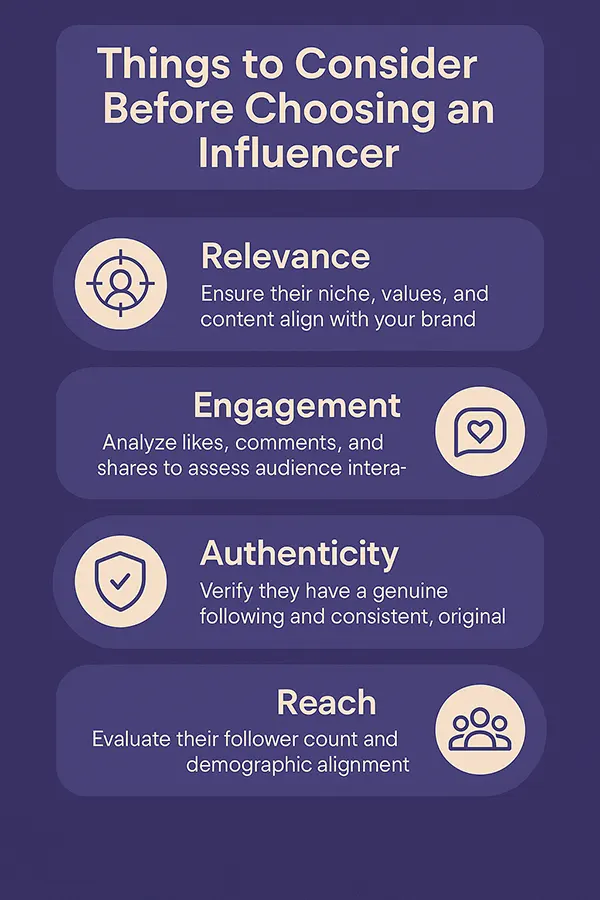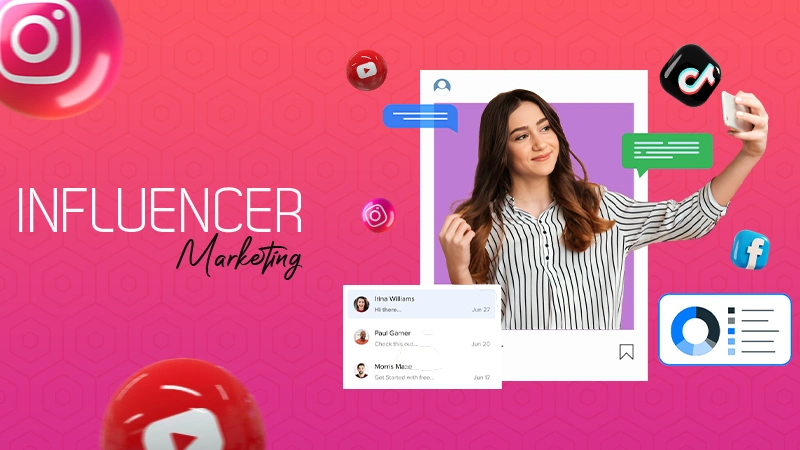Yes! They’re more than trendsetters now; they build real trust and help brands connect with niche audiences in authentic ways.
The 2025 Social Media Marketing Guide: How to Grow with Influencers
KEY TAKEAWAYS
- Influencer marketing drives authentic engagement.
- Choosing more aligned influencers is more effective.
- Influencers should focus on engagement and building a connection with the audience.
- Ethical practices, transparency, and compliance are crucial.
- TikTok, Instagram, and YouTube dominate 2025’s influencer marketing landscape.
A report states that 89% of marketers perceive influencer marketing effectiveness to match or exceed other marketing channel utilization.
The 2025 Social Media Marketing Guide: How to Grow with Influencers includes information about how creators are changing the way we approach digital marketing. Creators provide scalable and relatable outreach for brand storytelling, product launches, and ongoing engagement that connects deeply with today’s consumers.
Whether you’re a business owner or enrolled in a digital marketing course, you’ll learn how to choose the right influencers, navigate popular platforms, measure campaign performance, and avoid ethical missteps, so you can set your brand up for success while growing in the influencer space in 2025.
Why Influencer Marketing Still Works in 2025
Influencer marketing is still poised for success in 2025, due to its unique ability to generate trustworthiness and authenticity in a digital-first world. HubSpot reports that 69% of consumers have more trust in Influencers’ recommendations over traditional advertising, and it is only becoming more prominent.
With Gen Z and millennials valuing relatability and authenticity in every brand experience, whom do they turn to? An influencer. Influencers add a human element that brands can’t replicate when only selling products to consumers.
Micro- and nano-influencers have also started seeing more engagement due to creating niche-focused content and cultivating the companies’ communities. As algorithms change and organic reach declines, influencers deliver a direct channel to target audiences.
Choosing the Right Influencers for Your Brand Goals
Choosing influencers for your brand objectives in 2025 is more of a sophisticated process than ever. It really isn’t about follower count; it is about alignment. Brands should consider relevance, engagement rates, quality of content, and platform alignment.
For example, a skincare brand may get more value from a micro-influencer who has built a loyal community that focuses on beauty, rather than a celebrity with a larger audience with no clear contextual focus.
Likewise, you must start with clear objectives for your influencer partnership. “Are you focused on brand awareness, product sales, or community building?” When influencers have values or voice aligned with your brand identity, the partnership is authentic, effective, and meaningful for all. Below, you can see what areas you have to pay attention to before settling for any influencer.

Top Platforms and Trends Shaping Influencer Strategy
By 2025, with new platforms, evolving content style trends, and other factors, influencer strategy will be changing. TikTok is still king of short-form, viral video content. Instagram still reigns over visual storytelling in competition with TikTok, and it is the go-to platform for brand marketing, especially for organizations seeking to promote through Reels and Stories.
YouTube continues its dominance of long-form education content, as well as influencer and trusted product reviews. Meanwhile, new platforms such as LinkedIn are taking off for B2B influencer marketing.
Threads is allowing for thought leadership, and TikTok is evolving constantly. Two big themes going on right now, are AI-generated content, livestream shopping, and campaigns around authenticity are redefining content creation and influencer. Brands are also leveraging niche communities on platforms like Discord and Substack.
Measuring ROI and Success in Influencer Collaborations
In 2025, measuring ROI and the success of influencer partnerships takes a combination of data, tools, and KPIs. Brands are no longer measuring just likes or followers and vanity metrics; they are focusing on interaction and real human connection.
Influencer-specific promo codes, affiliate links, and UTM parameters have made it possible to literally track what influence campaigns yield. It’s important, however, to also measure brand lift over the longer term, that is, the follower’s perception of the brand, increased brand loyalty, and repeat engagements.
The best brands set objectives and KPIs in advance and gather all relevant evidence and data as they go. Only then will they be able to refine their influencer-marketing strategy, leveraging the data to achieve even greater objectives.
Avoiding Pitfalls: Ethics, Transparency, and Compliance in 2025
Staying out of trouble in influencer marketing means being ethical, transparent, and compliant with the law. Audiences are becoming smarter and quicker to disengage from content that feels disingenuous or deceptive.
Disclosure is an absolute must; hashtags such as #add or #sponsored must be readily accessible and prominent to consumers, as required by advertising regulators around the world, such as the FTC and ASA.
Brands also need to ensure that influencer partners know and abide by the guidelines set by the platforms being used and do not make overly broad or false claims, especially in sensitive industries like health, finance, or sustainability. Ethics doesn’t stop with disclosure or transparency. Ethical partnerships should also be obvious considerations for diversity, fair compensation, and mutual respect.
PRO TIP
Before finalizing any influencer, watch how they respond to comments on their posts. Engaged creators often build stronger trust, which means better results for your brand.
Conclusion
In 2025, influencer marketing is undeniably a strong option to leverage inherently authentic and targeted engagement on multiple mediums. Brands can create well-evaluated campaigns that effectively connect with consumers.
While it is a great way to promote any brand or product and build a great connection with the audience, make sure that everything is done ethically. Always comply with the law and maintain transparency so there won’t be any troubles in the future.
Are influencers still worth it in 2025?
How do I pick the right influencer for my brand?
Focus on the fit, not just followers. Look for creators whose audience, tone, and values match your brand.
How do I measure influencer marketing success?
Track engagement, clicks, sales, and followers’ growth. Use discount codes, affiliate links, or UTM tags for accuracy.
Do micro-influencers still work?
Definitely, smaller creators often have tighter-knit communities and better engagement. They’re great for building trust.







